All about planting broccoli

Broccoli is a vegetable that is less common in gardeners' backyards than cauliflower. But every year the culture is becoming more and more popular due to its dietary properties. So, 100 g of the product accounts for only 30–35 gigacalories.
The plant is rich in useful microelements such as folic acid, magnesium, potassium, phosphorus, calcium and vitamins A, B, C, PP, which have a beneficial effect on the entire human body. Broccoli is especially useful for people suffering from cardiovascular diseases, diabetes, as well as for pregnant women and children.
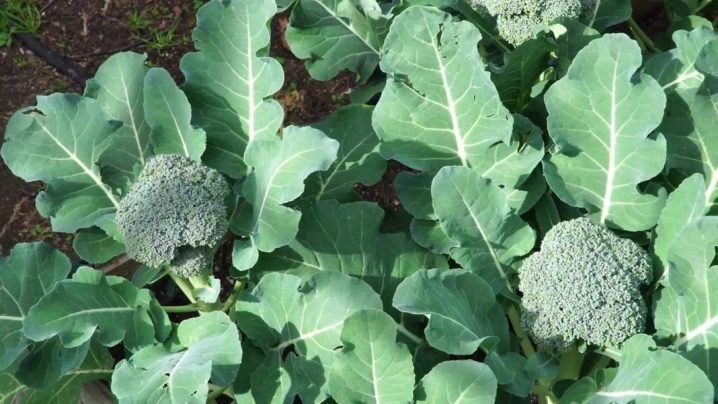
Seat selection
Growing broccoli in your backyard is straightforward. But still, you should take into account some of the nuances in order to get bountiful harvests. The culture grows well in temperate climates, even capable of withstanding frosts up to 5 degrees. The plant requires sun, water, fertile soil and coolness.
The most optimal temperature for development is plus 15-17 degrees, then the inflorescences are better tied. The maximum limit is 24 degrees Celsius. In turn, too high temperature indicators - from 25 and above - lead to deformation of the cabbage head, strong foliage.
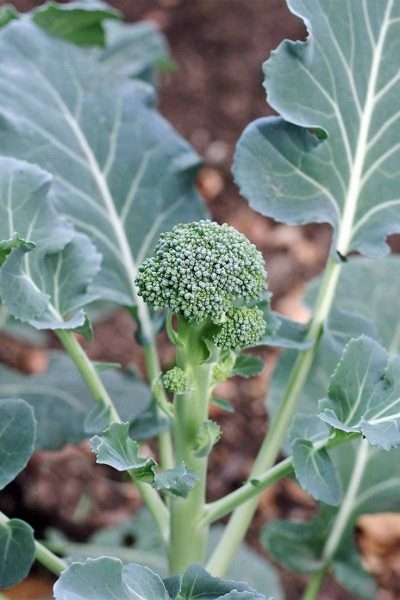
In the southern regions, where the temperature can rise above 35 degrees, it is better to grow broccoli in greenhouse conditions in the autumn-winter or winter-spring period, since drought and heat will not allow cabbage to form an inflorescence.
Joint planting of various vegetable crops allows not only to save space on the site, but also makes it possible to fight pests. Most vegetables can be planted near broccoli. Consider which neighbors are most suitable:
- legumes and cucumbers love moisture;
- calendula, marigolds, rosemary, mint and thyme repel pests due to their strong aroma;
- broccoli is good friends with tomatoes, parsley and onions;
- dill improves the taste of cabbage, while scaring away caterpillars and aphids;
- celery is able to scare off earthen fleas.
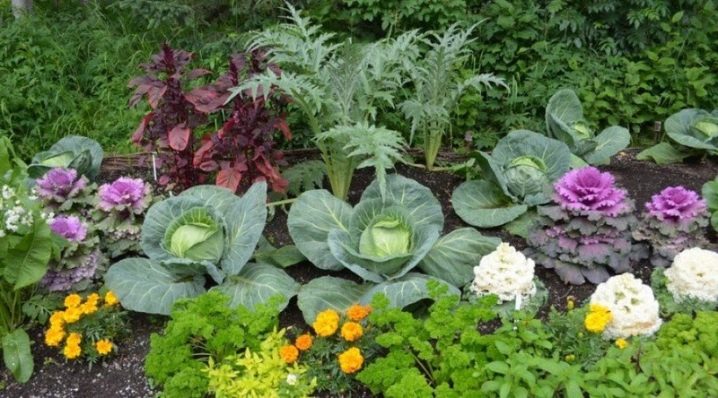
It is worth abandoning the neighborhood with other types of cabbage, as well as with cruciferous species, since they are able to pollinate among themselves.
In crop rotation, the best predecessors are carrots, grains, potatoes, legumes and cucumbers. Do not plant broccoli in areas after beets, radishes, turnips, radishes, or any other types of cabbage.
The broccoli site is chosen the most illuminated and even. The culture develops well on soils enriched with humus with an acidity level of 6.5 to 7.2. However, cabbage is also able to put up with poor soil. But then the harvest will be meager.
In addition, the plant is particularly demanding on the amount of watering. Especially a vegetable needs moisture at the initial stage of its development and during the growth of inflorescences.
The beds should be located in the direction from east to west. It is preferable that currant bushes are located next to the plant, capable of covering the seedlings from strong winds. In the southern regions, care must be taken to protect the broccoli from the scorching sun in the middle of the day. In the sun, the inflorescences will begin to fall apart.
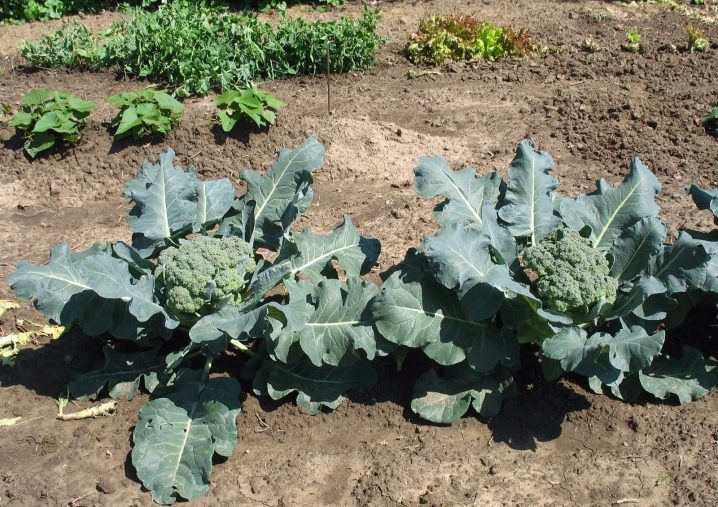
Soil preparation
Before starting planting work, the soil must be properly prepared. The soil for planting is prepared in the fall.It is carefully and deeply dug up, weeds and roots are removed, while applying organic fertilizers in the form of rotted mullein or compost, as well as ammonium nitrate, superphosphates and potassium chloride. If the soil is acidic on the site, then lime is added to make it more alkaline. In early spring, the soil is again enriched with organic fertilizers, carefully digging up the site.

How to prepare planting material?
The choice of planting material must be taken seriously, since the future harvest depends on it. Dry seeds are selected, only large specimens are left. To speed up the process of germinating seeds, they are first placed in hot water for 15-20 minutes, not higher than 50 degrees, and then left in cold water for several minutes.
After this procedure, the planting material must be left for 12 hours in a disinfectant solution consisting of boric acid and potassium permanganate. Next, you need to keep the seeds in a prepared ash solution for at least 5-6 hours. It will serve as a natural stimulant for root formation and seedling development.
Then the seeds are thoroughly washed with running water and left in the refrigerator for a day. Finally, they are dried a little. The seeds are now ready to germinate.
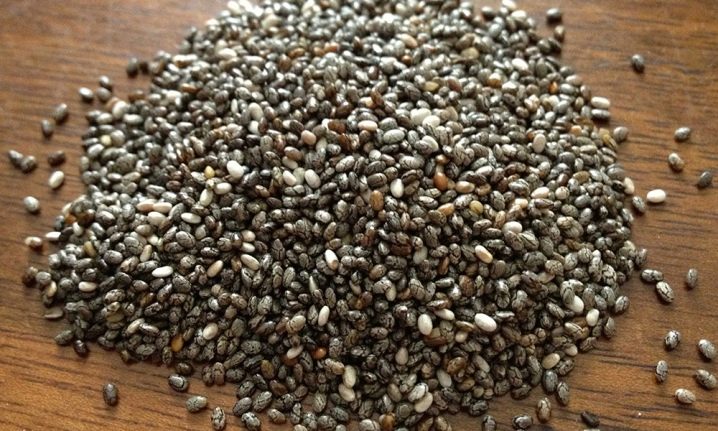
The optimal time for planting is mid-March or early April. In terms of planting, they proceed from whether the cabbage will be grown by seedlings or by seed directly in open soil.
How to plant outdoors?
Planting broccoli cabbage outdoors is done in April. In order for the vegetable to produce a harvest right up to the fall, experienced gardeners recommend planting it in 2-3 stages with an interval of 2 weeks.
The vegetable planting scheme provides for such an option so that the beds are not thickened. Plants are planted at a distance of 35-40 cm from each other, 50-60 cm are left between the rows. They start planting seedlings in the garden 35-45 days after sowing the seeds; the seedlings should have full-fledged 5-6 leaves. Usually, planting work begins in mid-May, when warm weather sets in. In cold climates, broccoli can also be planted in June.
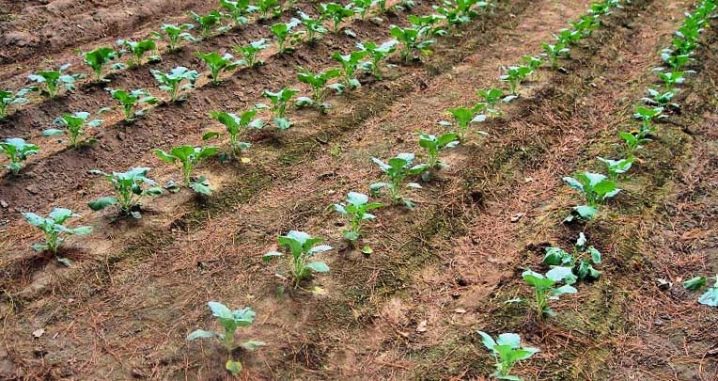
When carrying out planting work, it is necessary to put several glasses of wood ash and 1 teaspoon of urea in the hole. This will enable the culture to form large inflorescences. The pits are watered abundantly, since the plants are planted in very moist soil.
The holes themselves are made 20-25 cm deep, the height of the plant should be taken into account, since the seedlings are buried to the full height of the stem, leaving only the top. The main thing is not to fill up the growth point. If the picking of the seedlings was not carried out, then during the main planting it must be done. You should pinch the main root, so the lateral roots will begin to form better, and the entire root system will be more powerful.
The seedlings are carefully placed in the holes, covered with soil, tamped and watered again abundantly. After young leaves begin to appear on the seedlings, they begin to loosen the soil. Weeding must be done carefully, since you can accidentally damage the roots, which will lead to the death of the bush.
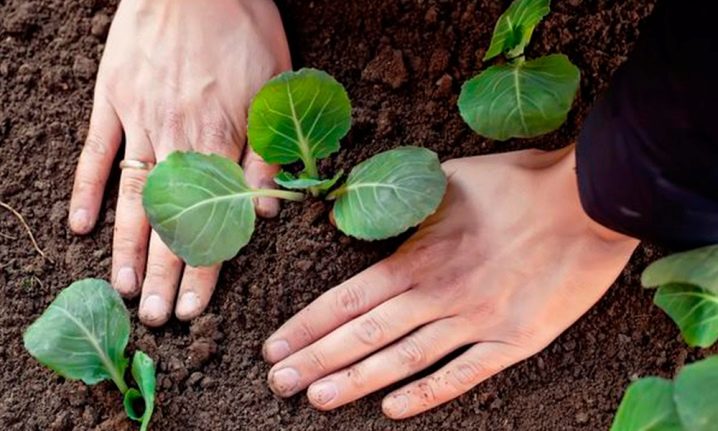
Correct care also consists in making regular feeding. 2 weeks after planting the seedlings, the soil is enriched with a solution of rotted cow manure at the rate of 200-250 g of organic matter per 10 liters of water or chicken manure. Due to the fact that chicken manure is a rather acidic fertilizer, it is diluted twice with a lot of liquid. If the seeds were sown directly into the ground, then they are fed no earlier than 3 weeks after germination.
The second additional dressing is mineral. It is carried out 2-3 weeks after the first. First, the plant needs ammonium nitrate to build up green mass and better ovary of inflorescences. After the head of cabbage itself begins to form, there is a need for phosphorus-potassium fertilizers.
After cutting the inflorescence, do not rush to remove the bush, it is able to form lateral heads of cabbage, however, of a smaller size.
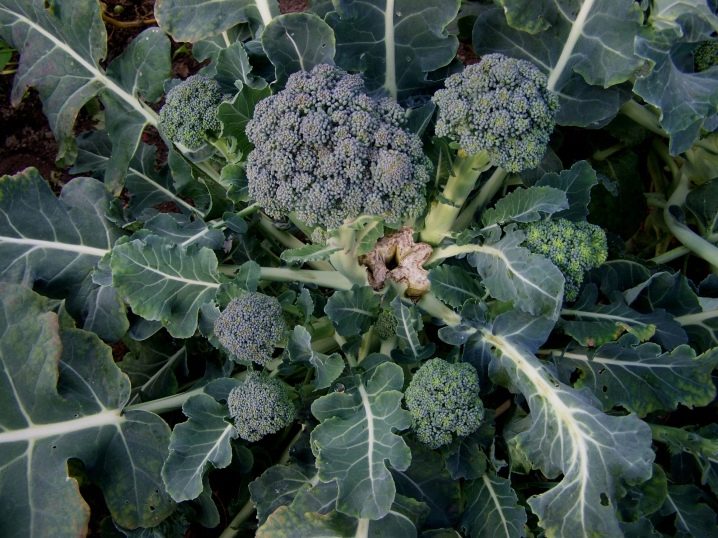
To do this, you need to stimulate the growth of side shoots. Per 10 liters of water, 10 g of urea, 20 g of phosphorus and 30 g of potassium are taken. 1 liter of prepared fertilizer is applied under each bush. Wood ash serves as a natural growth stimulant.
In the event of a threat of recurrent frosts, at first, the seedlings can be covered with agrofibre or ordinary film.
Like any plant, broccoli is susceptible to various fungal and bacterial diseases. When the first signs appear on the foliage and stems, they are sprayed with fungicides and insecticides. But if you carry out agrotechnical work correctly, then the culture practically does not get sick.
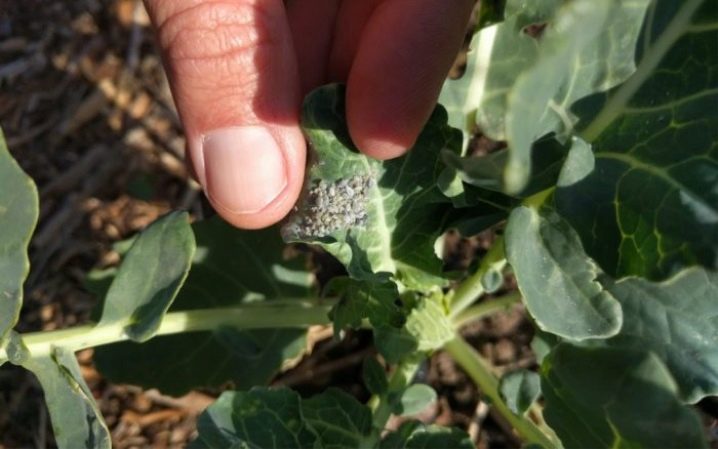
Seeds
Broccoli can be sown directly outdoors in early or mid-May, but the threat of night frosts should be avoided. The seeds are pre-prepared as previously described. After the emergence of seedlings, they must be thinned out. If there is no desire to bother with this procedure, they are sown according to the 30x50 cm scheme.
The seedlings are irrigated with warm water, and additional fertilizing is also applied for better development. Care consists in regularly weeding the beds from weeds and loosening the soil... To retain moisture in the soil, a layer of straw or dry grass mulch is laid around the bushes.
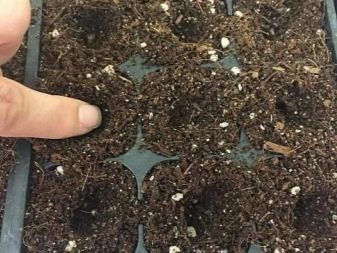
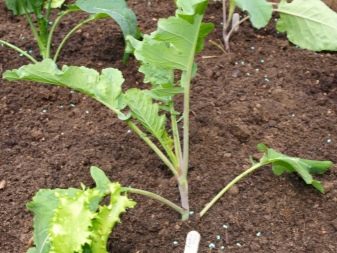
Seedlings
Growing a culture through seedlings is the most common method. For this, seedlings are used, separate peat pots or a greenhouse. It is better to use ready-made store-bought soil, which consists of sand, peat and humus. Wood ash is added as fertilizer.
24 hours before sowing seeds, it is spilled into the soil with a dark purple solution of potassium permanganate for disinfection. Further watering is carried out only with warm, settled water. When planting seeds, they are guided by a scheme of 3 cm between furrows and 2.5 cm between plants.
The optimum temperature for germinating seeds is + 20 degrees. After the emergence of seedlings, the temperature is reduced to + 15, trying to maintain a constant temperature regime until the day of disembarkation at a permanent place.
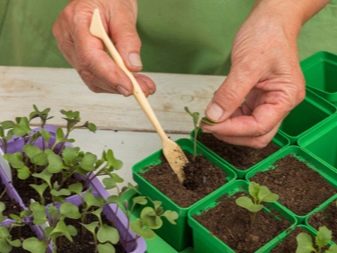
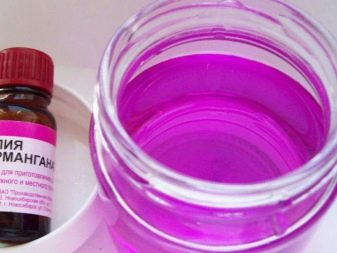
Seedlings are watered once every 2-3 days. It is impossible to overmoisten the ground, this can lead to the development of fungal infections, in particular, black leg. In turn, the lack of moisture slows down development and negatively affects the future harvest. To keep the soil constantly moist, it is best to use drip irrigation.
Plants respond positively to additional feeding. For 10 liters of water, 20 g of ammonium nitrate, superphosphate and potassium chloride are needed. The solution is introduced only when 2 full leaves appear on the seedlings.
Broccoli does not tolerate transplanting well. Experienced gardeners are advised to transplant seedlings along with an earthen clod. A few weeks before transplanting into open ground, the plants are hardened, leaving the seedlings in the fresh air for 2-3 hours.
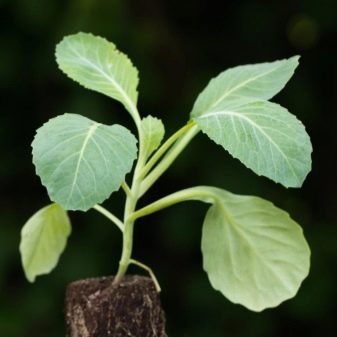
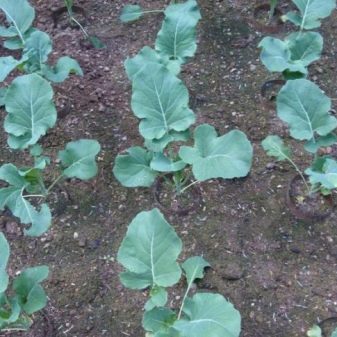
Features of planting in a greenhouse
Growing broccoli in a greenhouse produces very high yields. The main advantage of this method is the constant growing conditions. You can use both seedling and non-seedling method of obtaining seedlings.
However, in order for the culture to grow well and not get sick, you need to properly prepare the place... The greenhouse is prepared in the fall. It is necessary to remove the previous soil and fill the beds with fresh, enriched soil.
Seeds can be sown both in mid-April - early May and early March. After all, the planted seedlings in greenhouses are not afraid of changes in weather conditions.
The planting scheme and care conditions are no different from growing in the open field. The humidity in the greenhouse should be about 50-60%, and regular ventilation is also necessary.
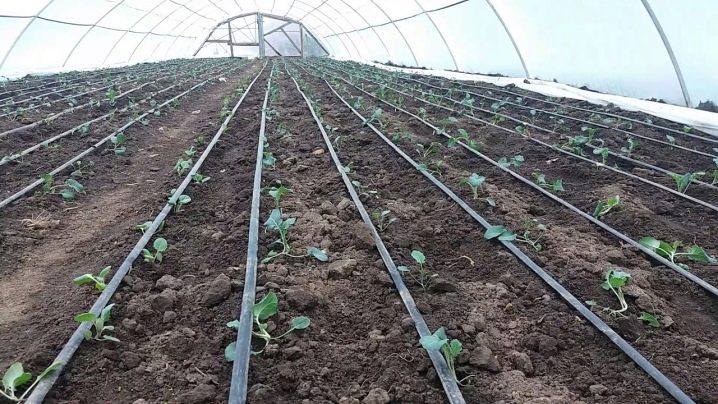
How to drop off on the balcony?
Despite the fact that broccoli is a vegetable crop, the plant can be successfully grown on the balcony of an apartment. To do this, you need to choose a fairly roomy pot, because.the main part of the root system lies at a depth of 25 cm.Choose containers with a volume of 20 liters or more and a diameter of at least 50 cm.
A drainage layer must be placed on the bottom of the pot, since cabbage does not tolerate stagnation of moisture in the roots at all. Next comes a nutritious soil mixture rich in humus.
On the balcony, seedlings can be left permanently only after constant warm weather has established. At noon, it is better to shade the plant from the scorching sun.
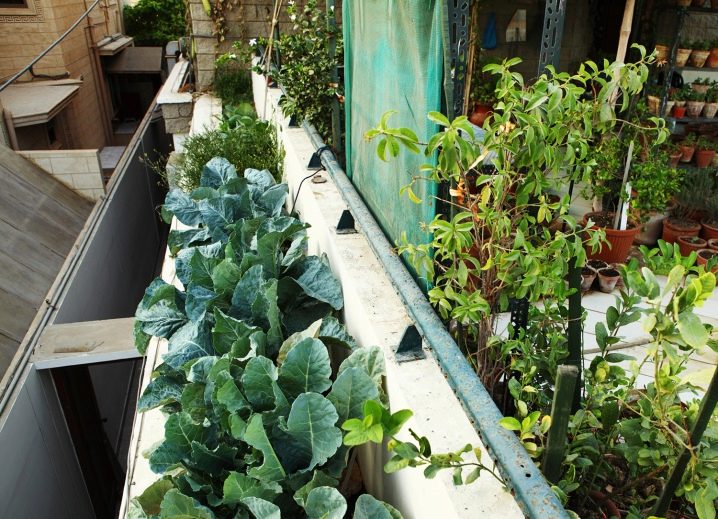













The comment was sent successfully.